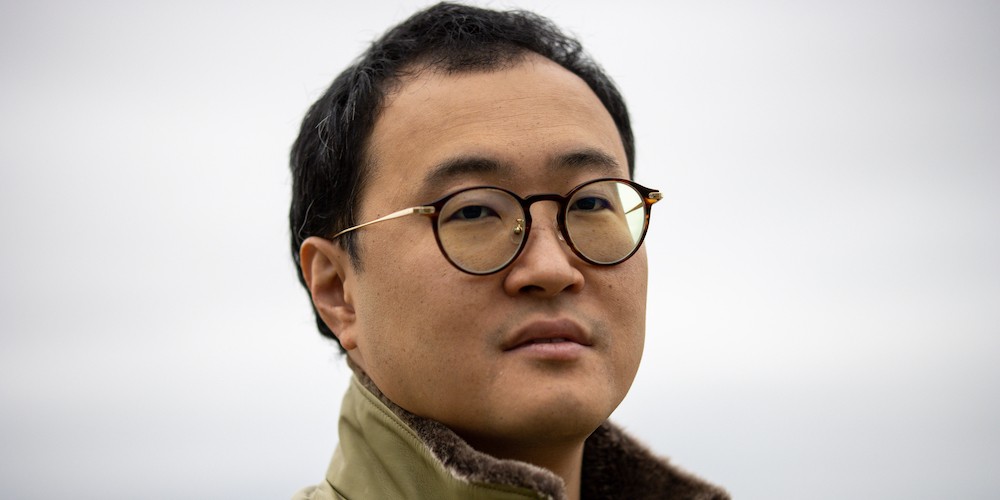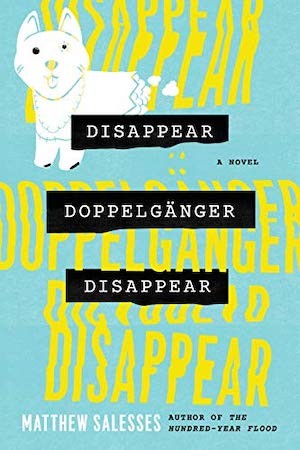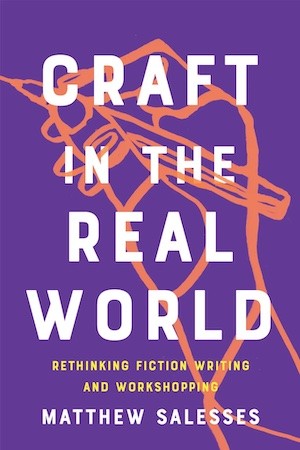This Is Who We Are: Matthew Salesses
This Is Who We Are is a series featuring Columbia School of the Arts’ professors, covering careers, pedagogy, and art-making. Here, we talk with Assistant Professor of Writing Matthew Salesses about writing myths, how to properly conduct a workshop and why successful writers are never the most talented.
To become a better writer, Assistant Professor Matthew Salesses says in the opening of his national bestseller, Craft in the Real World (Catapult, 2021), is to make conscious what starts as unconscious. I asked him right at the beginning of our conversation about the relationship between this sentence and the old literary cliché that artists have gleefully perpetuated: why do writers pretend the author doesn’t control what happens in the story?
“If you’re a writer, you’re not a genius who’s suddenly hit by a flash of lightning. It sounds attractive, but it is not true. As in life, you’re making decisions every time,” he told me in our Zoom interview. “The first step is understanding the decisions we make in our revision to improve our writing and thinking process. Revision is like self-awareness. The process of becoming a better writer is similar to the process of becoming a better person.”
Matthew Salesses is the author of seven books. Adopted from Korea at four, he has written about adoption, race, and grief for publications such as NPR's Code Switch, The New York Times, and The Guardian, among others. In 2015, Buzzfeed named him one of 32 Essential Asian American Writers.
Salesses, who grew up in a “very white town” where he felt out of place, mentioned his identity as one of the reasons he turned to writing in the first place. “People become writers because they feel un-empowered to tell stories in their regular lives. On the page, however, you have the power to tell whatever story you want to tell,” he told me. “Your answer about why you’re a writer has to change over time, but some recurring themes keep popping up in my books.”
"The process of becoming a better writer is similar to the process of becoming a better person."
In his first novel, The Hundred-Year Flood, the twenty-two-year-old Korean-American main character goes on a dreamlike quest for self-discovery and a new identity in the shadow of a looming and once-in-a-lifetime flood. In Disappear Doppelgänger Disappear, set in a time when the KKK endorses a presidential candidate, the author examines how Asian Americans are marginalized. “Sometimes I wonder why I keep writing, but then I remember that stories are essential for the world. We might not notice, but stories can hugely affect other people's lives,” he told me.
Salesses is also a prolific and successful essayist. In Craft In the Real World, an NPR best Book of the Year, the author challenges the traditional models of craft and workshop by placing them in their cultural and historical context. “Craft in the Real World is a significant contribution to discussions of the art of fiction and a necessary challenge to received views about whose stories are told, how they are told and for whom they are intended,” author Laila Lalami said in The New York Times Book Review.
First as a student and then as a professor, Salesses noticed how a workshop could change depending on the class leader and classmates and how the “gag rule”—during the discussion of their story, authors are expected to sit silently and listen—was becoming outdated. Firstly, it might be racially charged. “Over a decade ago, I sat silently in an MFA workshop while mostly white writers discussed my race,” he said in an interview with the International Examiner. “To avoid those moments, sometimes it is better to listen to the author first,” he told me. Secondly, the process might be more beneficial for the writer if the workshop becomes a fruitful dialogue.
“The workshop is an act of imagination where we're trying to conjure up what a story could be,” Salesses told me. “I ask students beforehand what they are trying to achieve with the story so I have more information. Workshops are a constant process of adjustment. If we know more about [the intended reader], we can help an author to do a better job as a writer. I’ve learned a lot from talking through a work-in-progress with the writer.”
Another theory we discussed was Salesses's idea of different audience levels. He asks his students to think about three concentric rings of readers, drawing a lesson from the fiction writer Mat Johnson. In the first and most immediate ring, writers are surrounded by friends and relatives who will read their book no matter what. But a novel turns into a bestseller when the second and third groups are explored.
“The second ring is formed by a larger group of people who understand everything you say, share the same cultural references, and get a ton of stuff without you explaining it. The third ring is the one that editors will aim for,” he told me. They might not understand all the references, but they could make the book a bestseller. You write to these inner audiences, but others can access your book too without the author having to point specifically right towards them.”
"The successful writers are never the super talented ones, but the people who keep doing this forever."
It was almost 7:00 pm. We were running out of time, and Salesses's daughter called in the background, demanding her father’s attention. Although I could have followed up with a hundred more questions, I kept it simple. What’s the most overrated trait in a writer? “The obsession with characterization,” he said after a few seconds. “I wouldn’t say it is overrated per se, but characters can sometimes come later. I think of it as puzzle pieces that are useful in the story.”
Then, when I asked Salesses about the most underrated writing trait, he answered as if he had thought about this question a million times: “Persistence.”
“The successful writers are never the super talented ones, but the people who keep doing this forever. Because of the sheer persistence, eventually, you will cross your borders,” he told me. My mind went back to the beginning of our interview, remembering that, according to Salesses, a skillful writer is not a genius but someone who just works out his unconscious more than anybody else. “Improvement is not a hill. It’s normally flatlined, and you suddenly make a breakthrough. As a writer, you might feel that you’re just on the flatline, not getting any better. But if you give up, you may miss the upcoming breakthrough. You never know. That’s why you must keep doing it forever.”
Matthew Salesses is the author of seven books, including the national bestseller Craft in the Real World, named a Best Book of 2021 by NPR, Esquire, Library Journal, Independent Book Review, the Chicago Tribune, Electric Literature, and others. His latest novel, Disappear Doppelgänger Disappear (Little, 2020), was a finalist for the PEN/Faulkner Award and longlisted for the Dublin International Literary Award. In 2023, Little, Brown will publish his next book, a novel titled The Sense of Wonder. That will be followed by a memoir in essays, To Grieve Is to Carry Another Time (also from Little, Brown, 2024). The title essay appeared in Best American Essays 2020. In 2015, Buzzfeed named Matthew one of 32 Essential Asian American Writers. He was adopted from Korea and has written about adoption, race, and grief for venues such as NPR's Code Switch, The New York Times Motherlode, and The Guardian, among others. His short fiction can be found in Glimmer Train, American Short Fiction, Flash Fiction America (2023), Witness, and elsewhere.


